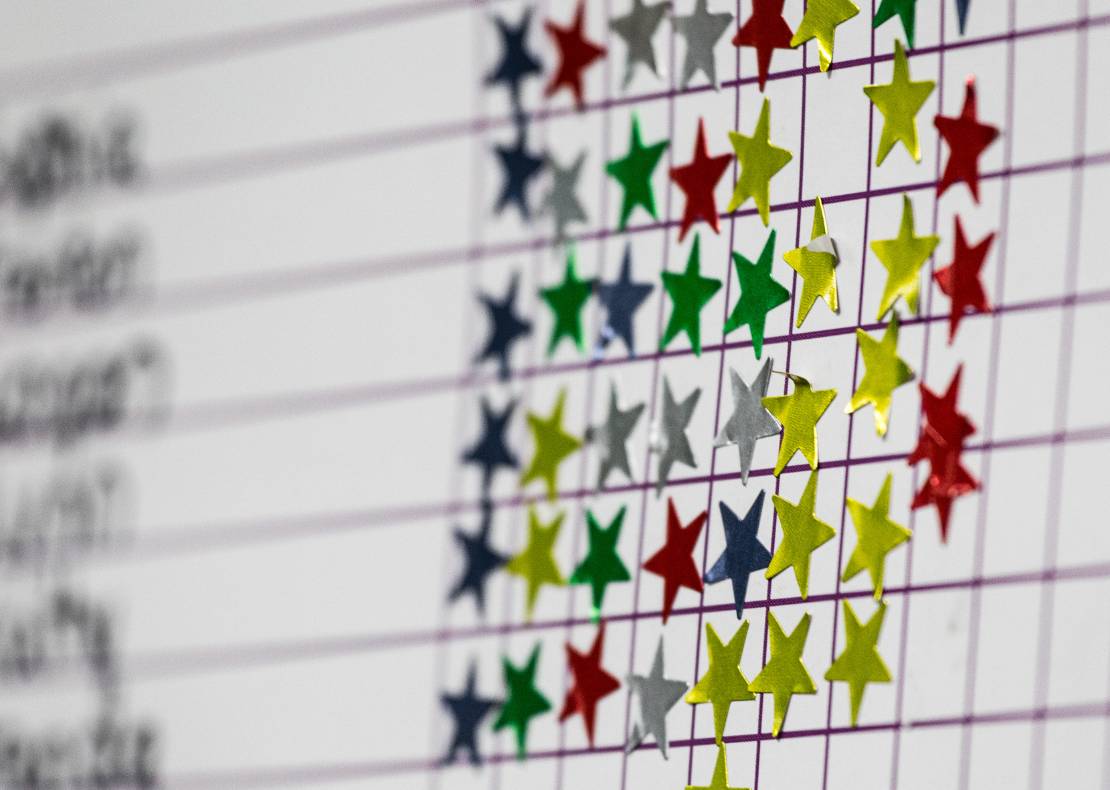
Parents and carers will be aware that there are often some tricky daily transitions where you ask your child to do something and you get pushback. In particular, bedtimes, mealtimes, and playtimes can cause issues and stress.
Visual aids like reward charts are great for communicating to children how much progress they've made and to reinforce positive behaviour with the idea that this will be repeated. In our experience, visuals can be excellent for helping children with SEND refocus on their positive actions and build self-esteem.
What are reward charts?
A reward chart works on the basic understanding that a child will be rewarded for doing something they don’t enjoy or find difficult, such as doing their homework, trying a new food, or going to bed on time.
Reward charts are a powerful way of:
- encouraging positive behaviour, like saying please.
- discouraging challenging behaviour, like hitting.
- rewarding your child for practising new skills, such as playing an instrument.
What can you reward?
When rewarding children, it's helpful to be clear so that they (and you!) know exactly what is expected of them. It's also important that everyone who gives rewards does so in the same way.
There are lots of things you can praise a child for. Any positive behaviour that you want your child to repeat can be rewarded. These might include:
- Bathtime, e.g. not splashing water.
- General routine, e.g. brushing their teeth.
- Tidying up, e.g. tidying toys away when they’ve finished playing.
- Food times, e.g. trying new food.
- Car journeys, e.g. not undoing the seatbelt.
- Bedtimes, e.g. trying to go to sleep by themselves/ not getting up too early.
Small, manageable goals are great for reward charts, but you should increase the difficulty of the tasks every few weeks to encourage steady progress. It may seem counterproductive to give children praise for doing ‘ordinary things’, but the goal of a rewards chart is to help kids form positive associations with tasks and establish a pattern of good behaviour. It also makes the carer’s life easier – and we’re certainly here for that!
Choose short-term rewards
Most children enjoy collecting stickers or tokens at the start. But the novelty can wear off quickly, and the bigger reward can seem too far away. So it’s good to choose short-term rewards that you can give often if your child earns them, like a family bike ride, 1 on 1 time with mum or dad, the chance to stay up a bit later than usual, a movie night, or a new book or small treat.
Watch carefully for when your child behaves well
This keeps the focus on encouraging good behaviour. For example, your child might be hitting, and you want to change this. You could try looking for times in the day when your child is keeping their hands to themselves, and give your child stickers for those two times on the reward chart. Acknowledging that you’re proud of them for staying calm will also give positive reinforcement.
Give your child stickers straight after the behaviour
When your child gets stickers straight after the behaviour you want to encourage, it reinforces this behaviour. Likewise, some specific praise reminds your child why they’re getting stickers or tokens. For example, ‘Well done for brushing your teeth today. You spent two minutes and even reached the back of your teeth. Here’s a star for your chart’.
What if my child gets bored of the reward chart?
This can happen if you’ve been using reward charts for a while. There are a few things you can try in this situation:
- Offer your child a choice of rewards to spend their stickers on. For example, 5 stickers = a game with mum or extra time before lights out, 10 stickers = a trip to the park or a small treat.
- Offer your child a choice of good behaviour. For example, ‘Do you want to tidy your room or set the table?’ This gives your child a sense of control, which can be very motivating.
- Give your child plenty of praise for good behaviour. This can include nonverbal praise. For example, thumbs up, smiles and high fives are powerful ways to show you’re impressed by your child’s behaviour.
- Surprise your child with intermittent rewards for good behaviour. For example, ‘Thanks for putting your toys away in the right boxes – let’s go to the park to celebrate’.
Always stay positive
Negative behaviour will happen, no one can be perfect all the time. Children do not have the capability to control their behaviour sometimes so try to focus on the good.
It's best to move on if your child doesn't get a star. Also, don't punish your child by saying, "I'll take away a star" or "If you keep doing that, you won't get any stars!" Encourage your child to keep trying. If they miss their goal occasionally, remind them that they can always try again the next day.
Crossing the finish line
When your child gets to the end of their chart and has been good or learned their new skill, their first reward should be your praise and excitement for the progress they've made. Show them how proud you are of what they've achieved!
When they are ready, they can claim their ultimate reward—whatever it was they really wanted when you first began the chart.
If reward charts aren’t working for your child and you have concerns about your child’s behaviour, it’s a good idea to talk with your child and family health nurse or GP.
We’ve got lots of toys for you to use as rewards, so check out our website, or contact us for more information!








